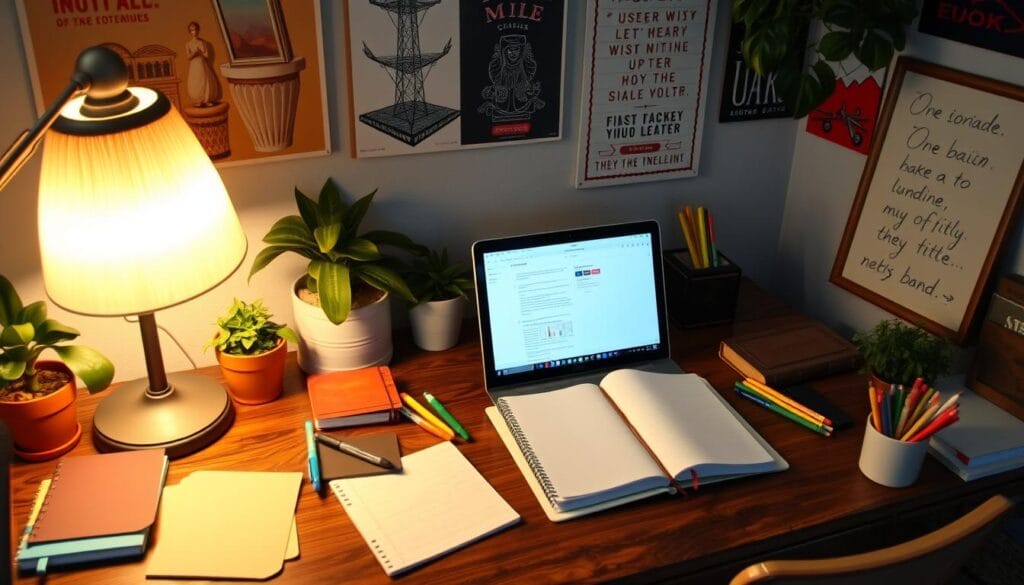5 Steps to Set the Tone for a Successful First Meeting with Students
فهرس المقالة
Meeting your new students for the first time can be both exciting and nerve-wracking. As an educator, you want this initial interaction to leave a positive impression and set the stage for a productive, respectful, and enjoyable classroom environment. Your first meeting is more than just introductions—it’s the foundation for a successful academic journey. This guide will help you make that first day count by giving you practical strategies and actionable tips to ensure success.
Preparation Before the First Meeting

Setting Clear Goals
Before stepping into the classroom, take time to reflect on your objectives for the day. Ask yourself:
- What do I want my students to remember about me?
- How do I want them to feel when they leave the room?
Your primary focus should be creating a welcoming atmosphere while setting expectations for learning and collaboration. Think of your goals as a roadmap for the day’s activities, ensuring every interaction aligns with your vision for the class.
Classroom Setup Matters
The way you organize your classroom sends a silent message to your students. A clean, inviting space shows that you care about their comfort and learning. Consider:
- Seating arrangements: Use a layout that encourages interaction, such as a circle or small clusters.
- Decor: Add motivational posters, student-friendly visuals, and subject-related materials.
- Accessibility: Arrange supplies and resources where students can easily find them.
A thoughtfully arranged classroom fosters a sense of belonging and sets the tone for a positive learning experience.
Planning Activities for Engagement
Engagement is the key to capturing your students’ attention from the start. Plan activities that encourage participation and help you get to know your students better. Here are a few ideas:
- Icebreakers: Games like “Two Truths and a Lie” or “Name Bingo” work wonders for breaking the ice.
- Quick Surveys: Use short questionnaires to learn about students’ interests and goals.
- Interactive Introductions: Pair students up and have them introduce each other to the class.
Activities like these not only lighten the mood but also help establish a sense of community.
Building Rapport on Day One

Start with a Warm Welcome
A genuine smile and a friendly greeting go a long way in making students feel at ease. Take a moment to personally acknowledge each student as they enter the classroom. This simple gesture helps establish trust and sets a welcoming tone.
Once everyone is seated, share a fun or inspiring story about your journey as a teacher. Relating to your students on a human level makes you approachable and builds rapport.
Active Listening and Observing
Engage with your students by showing genuine interest in what they have to say. Ask questions, encourage responses, and make eye contact. Active listening not only helps you connect but also gives you valuable insights into your students’ personalities and learning styles.
Pay attention to non-verbal cues as well. Are some students shy or hesitant to speak up? Use this observation to create a supportive environment where everyone feels comfortable sharing.
Establishing Mutual Respect
Respect is a two-way street, and the first meeting is an opportunity to lay the groundwork for it. Instead of presenting a list of rules, discuss values that matter to the classroom. For example:
- How can we create an environment where everyone feels heard?
- What does respect look like in this classroom?
Involve students in creating a set of class norms. When they contribute, they are more likely to take ownership and adhere to the guidelines.
Setting Expectations Without Overwhelming
Start with General Guidelines
Rather than overwhelming students with a rigid list of rules, focus on broader principles that promote harmony and productivity. For instance:
- Be punctual.
- Participate actively.
- Show kindness to your peers.
This approach helps students understand what’s expected of them without feeling burdened.
Use Positive Reinforcement
Highlight the benefits of adhering to classroom norms. For example:
- Participating actively leads to better understanding and grades.
- Kindness creates a supportive and enjoyable learning environment.
Use stories or examples to illustrate these points, making them relatable and easy to remember.
Involve Students in the Process
Giving students a voice in setting expectations not only empowers them but also fosters accountability. Use a simple table to document their input:
| Student Suggestions | Class Agreement |
|---|---|
| Speak kindly | Agree |
| Raise hands to speak | Agree |
This collaborative approach ensures everyone feels included and valued.
Creating Memorable First Impressions
Leverage Visual and Digital Aids
Visuals can make your introduction more engaging and memorable. Use slides, infographics, or short videos to share details about yourself, such as:
- Your teaching philosophy.
- Hobbies or fun facts.
- Exciting plans for the semester.
These aids not only keep students interested but also help you communicate effectively.
Showcase Your Passion for Teaching
Let your enthusiasm shine through as you speak about your subject and your goals for the year. Share why you chose teaching and what you hope to achieve with this class. Your energy is contagious and will inspire students to match your excitement.
End on a Positive Note
Wrap up the first meeting with an inspiring message or a class motto. For example:
“This year is going to be about discovery, growth, and success. Together, we can achieve great things!”
Provide a quick preview of upcoming lessons or activities to build anticipation for the next class.
Pro Tips for Making the First Meeting a Success
Be Authentic and Approachable
Students appreciate honesty and authenticity. Be yourself, share your unique perspective, and encourage them to do the same. This creates a foundation of trust and openness.
Follow Up After the First Meeting
Keep the momentum going by sending a follow-up email or message. Recap what was discussed and include a fun activity or challenge for students to complete before the next class.
FAQ: First Meeting with Students
How Do I Handle Nervousness During the First Meeting?
Feeling nervous is normal. Prepare thoroughly, focus on your students, and remember that authenticity matters more than perfection.
What If a Student Misbehaves on the First Day?
Stay calm and address the behavior directly but respectfully. Set clear expectations and avoid embarrassing the student in front of their peers.
What Activities Work Best for Building Rapport?
Icebreakers, group discussions, and collaborative games are excellent ways to connect with students and create a sense of community.
Conclusion: Setting the Tone for Success
Your first meeting with students is an invaluable opportunity to establish rapport, set expectations, and create a positive classroom environment. By preparing thoughtfully, engaging genuinely, and involving students in the process, you can set the tone for a successful year.
Remember, the effort you put into this initial interaction pays off in the form of stronger relationships, smoother classroom management, and more effective teaching. Now it’s your turn to put these strategies into action and make your first meeting unforgettable.
Call-to-Action:
Are you ready to make your first meeting with students a success? Share your experiences or favorite tips in the comments below! Let’s inspire and learn from each other.






